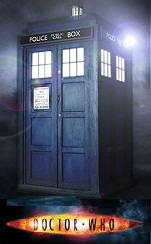|  
 
 
 
 
 | | | | ![[credit: John Pderson, Jr.]](covers/fsf/fsf-196302-100dpi.jpg) | | “The Nature of the Place”
by Robert Silverberg
First publication: The Magazine of Fantasy and Science Fiction, Feb 1963

Paul Dearborn is quite certain that he’ll go to hell, a prospect that bothers him in only one way: the uncertainty of what it will be.

And the only thing that bothers me is that I just had to read this in the month of my own sixtieth birthday. Oh, that no-goodnick Silverberg! He thought back over his sixty years. The betrayals, the disappointments, the sins, the hangovers. He had some money now, and by some standards he was a successful man. But life hadn't been any joyride. It had been rocky and fear-torn, filled with doubts and headaches, moments of complete despair, others of frustrated pain. He thought back over his sixty years. The betrayals, the disappointments, the sins, the hangovers. He had some money now, and by some standards he was a successful man. But life hadn't been any joyride. It had been rocky and fear-torn, filled with doubts and headaches, moments of complete despair, others of frustrated pain. 
| |
| | | | |

 
 
 
 
 
 
 
 
 
 
 | | | | 

| | Dr. Who
created by Sydney Newman, C.E. Webber, and Donald Wilson
First episode: 23 Nov 1963

Sadly, I’ve never been a vassel of the Time Lord, though I’ve seen his pull on his other subjects such as my student Viktor who gave me a run-down of the tv and movie series and spin-offs. In exchange, I guaranteed him at least a 4-star rating and he promised to never again mention the short story, comic book, audio book, radio, cartoon, novel, t-shirt, stage and coffee mug spin-offs.- Dr. Who (23 Nov 1963 - 6 Dec 1989) original series
- Dr. Who and the Daleks (23 Aug 1965) theatrical movie
- Daleks’s Invasion Earth: 2150 A.D. (5 Aug 1966) theatrical movie
- K-9 and Company (28 Dec 1981) spin-off series
- P.R.O.B.E. The Zero Imperative (1994) direct-to-video
- P.R.O.B.E. The Devil of Winterborne (1995) direct-to-video
- P.R.O.B.E. Unnatural Selection (1996) direct-to-video
- P.R.O.B.E. Ghosts of Winterborne (1996) direct-to-video
- Dr. Who (12 May 1996) tv movie
- Dr. Who (26 Mar 2005 - present) series revival
- Torchwood (22 Oct 2006 - 15 Sep 2011) spin-off series
- The Sarah Jane Adventures (1 Jan 2007 - 18 Oct 2011) spin-off series
- K-9 and Company (31 Oct 2009 - 3 Apr 2010) spin-off series
- Counter-Measures (Jul 2012 - Jan 2014) audio spin-off
- Class (Dec 2016) spin-off aimed at teens
 Hard to remember. Some time soon now, I think. Hard to remember. Some time soon now, I think. 

—The Doctor answering a police officer’s query as to his date of birth
| |
| | | | |

 
No Time Travel. Move along. |
“Green Magic” by Jack Vance, The Magazine of Fantasy and Science Fiction, Jun 1963 [differing time rates ]

Glory Road by Robert A. Heinlein, F&SF, Jul–Sep 1963 [parallel universes ]

“The Right Time” by John Berryman, Analog, Dec 1963 [precognition ]

The Sword in the Stone by Bill Peet, 25 Dec 1963 [despite title, no time travel ]

| |     |